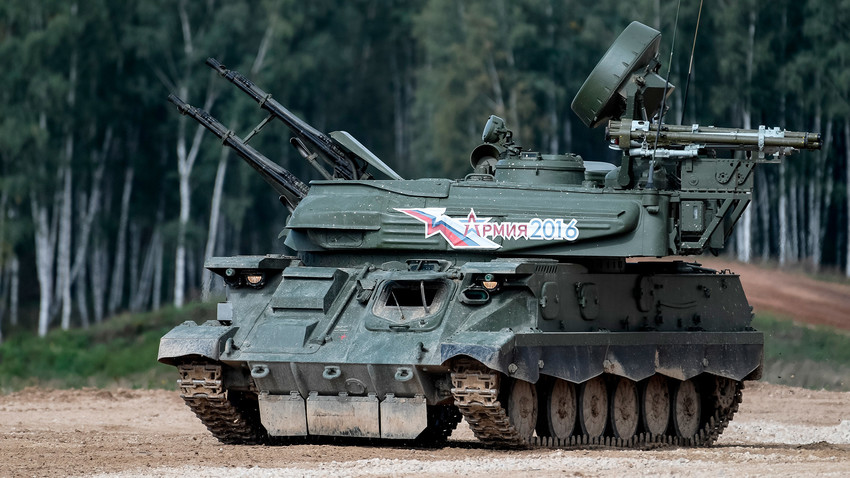Russia's most formidable anti-aircraft weapons

A ZSU-23-4 "Shilka" during a military machine demonstration at the Alabino training ground held as part of the international military-technical forum ARMY-2016.
Grigoriy Sisoev/RIA NovostiThe following is a list of the most formidable anti-aircraft weapon systems in the arsenal of the Russian armed forces.
ZSU-23-4 "Shilka"
Despite its substantial age (it was designed in 1964), this self-propelled anti-aircraft
In the course of over 50
The deadly cannon was used not just against low-flying enemy targets (attack aircraft and helicopters) but also light armored vehicles - for instance, during the Afghan war.
Technical progress did not come to a halt, however, and the Shilka's 23-mm rounds became inadequate for potential combat against well-armored equipment. And in the 1980s the military received a new anti-aircraft weapon that combined missiles with 30-mm ammunition rounds.
The ZPRK 2S6M1 "Tunguska-M1"
The first weapon of this kind was the Tunguska anti-aircraft missile and gun system. It combined guided missiles with two 30-mm 2A38M cannons that created an impenetrable barrage of 5,000 rounds per minute.
Unlike its predecessor, the new weapon could fire while on the move and also hit aircraft and helicopters at an altitude of up to 10 km with its missiles.
With the passage of time, the Tunguska has undergone a large number of alterations and modifications to meet new challenges and it remains to this day on a par with the country's most formidable anti-aircraft weapons, including the latest Pantsir-S1.
Russia's anti-aircraft "armor"

A 96K6 "Pantsir-S1" air defense missile-gun system during a demonstration exercise held at the Alabino training ground as part of the international military-technical forum ARMY-2016.
Evgeny Biyatov/RIA NovostiToday the Pantsir system (the Russian word means "armor") is regarded as the last line of defense for civilian installations, military
The system is different from its Soviet predecessors in that it is almost fully automated. The anti-aircraft missile and gun system's computers independently detect airborne targets, after which the military press the button to fire, thus destroying the last threats that may have miraculously got through the S-400 and Tor-M2 defenses.
In June this year, Russian arms manufacturers unveiled to the world a maritime version of the system, which is currently undergoing state tests. Depending on the results, top officials at the Russian Federation Defense Ministry will take a decision on whether the Pantsir anti-aircraft missile and
If using any of Russia Beyond's content, partly or in full, always provide an active hyperlink to the original material.
Subscribe
to our newsletter!
Get the week's best stories straight to your inbox